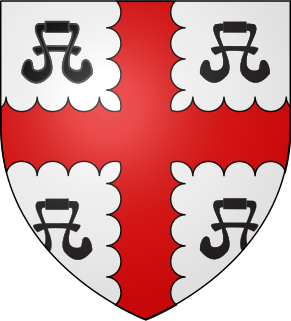
William Bourchier, 1st Count of Eu, was an English knight created by King Henry V 1st Count of Eu, in Normandy.

John Bourchier, 1st Earl of Bath was named Earl of Bath in 1536. He was feudal baron of Bampton in Devon.

John Bourchier, 2nd Earl of Bath, was an Earl in the peerage of England. He also succeeded to the titles of 12th Baron FitzWarin, Baron Daubeney and 4th Count of Eu.

William Bourchier, 3rd Earl of Bath was Lord Lieutenant of Devon. His seat was at Tawstock Court, three miles south of Barnstaple in North Devon, which he rebuilt in the Elizabethan style in 1574, the date being sculpted on the surviving gate house.

Edward Bourchier, 4th Earl of Bath.
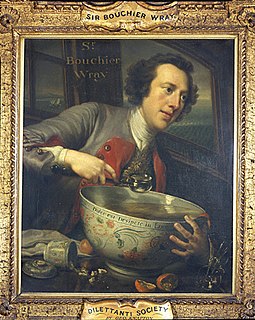
Sir Bourchier Wrey, 6th Baronet of Tawstock, Devon, was a Member of Parliament for Barnstaple, Devon, in 1747–1754. The manor of Tawstock, about two miles south of Barnstaple, had been since the time of Henry de Tracy the residence of the feudal barons of Barnstaple, ancestors of the Wrey family.
Bourchier is an English surname, from French Boursier, keeper of the purse. Bourchier is the Norman pronunciation.

Tawstock is a village, civil parish and former manor in North Devon in the English county of Devon, England. The parish is surrounded clockwise from the north by the parishes of Barnstaple, Bishop's Tawton, Atherington, Yarnscombe, Horwood, Lovacott and Newton Tracey and Fremington. In 2001 it had a population of 2,093. The estimated population in June 2019 was 2,372.

Fulk Bourchier, 10th Baron FitzWarin was the son and heir of William Bourchier, 9th Baron FitzWarin (1407–1470) and the father of John Bourchier, 1st Earl of Bath. He was feudal baron of Bampton in Devon.

Baron FitzWarin is an abeyant title in the Peerage of England. It was created by Writ of summons for Fulk V FitzWarin in 1295. His family had been magnates for nearly a century, at least since his grandfather Fulk III FitzWarin had recovered Whittington Castle in 1205. This castle near Oswestry was their main residence and the seat of a marcher lordship. It was regarded as situated in the county of Shropshire since 1536 and also in the Domesday Book of 1086, but for much of the intervening period was regarded as part of Wales.

Sir Robert Bourchier Sherard Wrey, 11th Baronet DL JP of Tawstock Court, North Devon, was a prominent member of the Devonshire gentry.

Sir Thomas Kitson was a wealthy English merchant, Sheriff of London, and builder of Hengrave Hall in Suffolk.

From AD 1066, the feudal barony of Barnstaple was a large feudal barony with its caput at the town of Barnstaple in north Devon, England. It was one of eight feudal baronies in Devonshire which existed in the Middle Ages. In 1236 it comprised 56 knight's fees or individual member manors. The feudal service owed for half the barony in 1274 was the provision to the royal army of two knights or four sergeants for forty days per annum, later commuted to scutage.
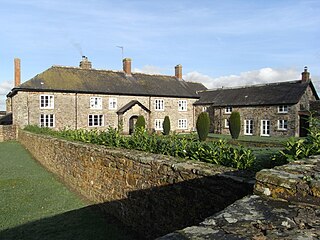
Brightley was historically the principal secondary estate within the parish and former manor of Chittlehampton in the county of Devon, England, situated about 2 1/4 miles south-west of the church and on a hillside above the River Taw. From the early 16th century to 1715 it was the seat of the Giffard family, whose mansion house occupied the moated site immediately to the west of the present large farmhouse known as Brightley Barton, a Grade II listed building which incorporates some elements of the earlier house. It is not to be confused with the 12th-century Brightley Priory near Okehampton.

The feudal barony of Bampton was one of eight feudal baronies in Devonshire which existed during the mediaeval era, and had its caput at Bampton Castle within the manor of Bampton.

William Bourchier (1407–1470) jure uxoris 9th Baron FitzWarin, was an English nobleman. He was summoned to Parliament in 1448 as Baron FitzWarin in right of his wife Thomasine Hankford.

Ash in the parish of Braunton in North Devon is a historic estate listed in the Domesday Book. The present mansion, known as The Ash Barton estate is a Grade II* listed building.
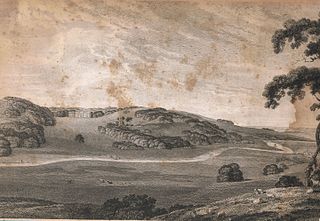
The historic manor of Tawstock was situated in North Devon, in the hundred of Fremington, 2 miles south of Barnstaple, England. According to Pole the feudal baron of Barnstaple Henry de Tracy made Tawstock his seat, apparently having abandoned Barnstaple Castle as the chief residence of the barony. Many of the historic lords of the manor are commemorated by monuments in St Peter's Church, the parish church of Tawstock which in the opinion of Pevsner contains "the best collection in the county apart from those in the cathedral", and in the opinion of Hoskins "contains the finest collection of monuments in Devon and one of the most notable in England".

Margaret II Audley was a co-heiress to the feudal barony of Barnstaple in Devon, England.
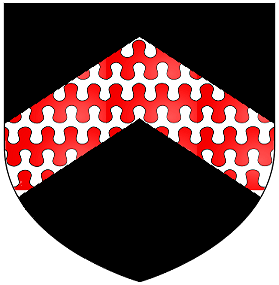
Sir Richard Hankford was holder by right of his wife of the feudal barony of Bampton and part of the feudal barony of Barnstaple in Devon, England.

















